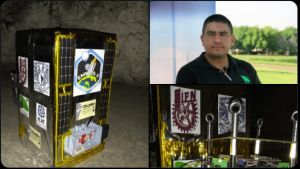Tuesday’s 7.1 two almost simultaneous — four minutes apart — earthquakes were indeed a mystery because as they say in baseball, they came out of left field, that is, not from a seismic place.
The two epicenters were on the border of the states of Morelos and Puebla, in the townships of Axochiapan in the state of Morelos and Raboso in the state of Puebla, both just three miles away from each other according to preliminary reviews both from Mexico’s National Seismological Service and the U.S. Seismological Service.
The common denominator of both epicenters is that they are both southeast of the constant rumbling and chain smoking Popo volcano, one of Mexico City’s most prominent landmark sites and popularly known as Gregorio Chino Popocatépetl — Don Goyo, for short.
When you have lived in Mexico City for as long as I did — nearly 40 years — you become by simple nature an amateur seismologist. But this curiosity to study the movement of plates came too out of my three years in school in California where I paid a visit to San Luis Obispo — wonderful western style cantinas, or “muy sabrosas” as my older brother would put it — with the intent of watching the San Andreas Fault first hand. Of course we visited the bars but not before discussing the fault.
I lived through 8.1 on the Richter scale on September 19, 1985 unscathed even if I lived in a one floor house in Colonia del Valle that was flanked by two high-rise apartment buildings. It was a mostly oscillatory and my elderly mother was living with me. After the scare had waned I asked my mother how she had felt the jostling and she just said “it felt nice, I felt like if I was rocking on a hammock.”
The 6.5 aftershock of the 1985 quake felt to me more brutal than the “big one” itself and of course trying to find out where it came from, I finally learned that on the Pacific Ocean some 200 miles west of Acapulco the sea bottom had opened up forming an 800 kilometer long and 200 kilometer wide hole from the movement of the tectonic plaques on the earth’s crust. That explanation was good enough to convince me of the humongous size of the earthquake.
Then while living in Tijuana back in 1989 I felt one of those “tremors” peculiar to the Southern California area which come in the trepidatory mode in which you feel the ground trepidate under your feet. But in the end, quakes in that area are not big enough to bring buildings down the way Tuesday’s one did.
Since 1985 both the Mexico City and the federal governments have spent a mint in trying to figure out how to “prevent” disasters and obviously the proof of the pudding is that once again they were caught off guard.
The government has developed what is called the National Center for the Prevention of Disasters (Cenapred) which obviously has turned out to be more of a front for another bureaucratic office than warning the population of when disaster is going to strike.
And here comes the gist of the point in question. Why didn’t Conapred’s very expensive alarm system begin warning sounds of the quake until it was in the middle of it? The reason again is that these guys never saw a tremor coming from the southeast and all the earthquake alarms are located along the Pacific Ocean coast.
Cenapred director Carlos Valdés described the shake as both trepidatory and oscillatory with the trepidation merely shaking up buildings but the oscillation moving they sideways and knocking many of them down.
“Its duration was short but its intensity very big. It was the intensity that caused the collapses.”
But there is no explanation as to why the trembling came from the southeast and not from the southwest as expected.
My own conclusion is that Don Goyo volcano began erupting in 1994 and has not stopped ever since. The earth around the volcano shakes for miles around to the point that people no longer pay heed to little tremors.
But surely, so much vibration has taken its toll on the very soft ground — not rocky like in the ocean — in the Puebla-Morelos area and has caused accommodation of plaques underneath.
Cenapred now has to look for another direction and director Carlos Valdés that “now we have to change the protocols” to warn people when another earthquake is on its way.
Let’s hope it works!!!










